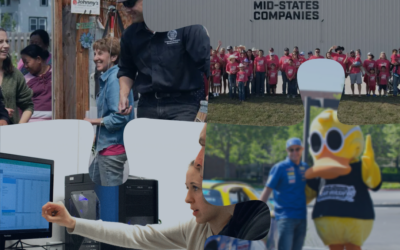For many organizations today, Enterprise Resource Planning, or ERP software, is an important part of doing business. As technology has changed the way they do business over the last few decades, organizations have increasingly embraced the ability to automate repetitive tasks, create scalable systems, and adopt digital systems that can streamline everything from marketing to operations.
One of the most used ERP software systems is Microsoft’s Dynamics GP, which helps organizations improve efficiency and organization. Over the years, many versions of Dynamics GP have been released. Understanding your own version of Dynamics GP can be extremely important. Versions of Dynamics GP go through a life-cycle, meaning that depending on your version, your software may be in various stages of the product’s lifecycle.
At the end of the Dynamics GP lifecycle, Microsoft will no longer support a version—meaning that not only will it no longer receive new features, bug fixes or security updates. Naturally, this represents not only an inconvenience but a serious security vulnerability. It’s important to understand your version’s version number and be familiar with its lifecycle.
Decoding Your GP Version Number
To determine where in your product lifecycle your version of Dynamic GP is, you’ll need to first identify and understand your version number. Using that information, you’ll be able to determine where in the product lifecycle it is.
To find your version number, go to Dynamics GP. In Dynamics GP, you’ll find a question mark symbol denoting the help section. Choose that and then select “About Microsoft Dynamics GP.” This will tell you what your Dynamics GP version number is.
Determining the Support Status of Your Dynamics GP Version
Since the support status of whatever version of Dynamics GP, you are using will determine whether it receives crucial ongoing support—including security updates, and for how long—it is extremely important to be familiar with the version of Dynamics GP your organization is using, and its support status.
Here’s a quick visual breakdown.
| Release Date | Official Name | Version Number | Support End Date |
|---|---|---|---|
| 12/1/14 | Microsoft Dynamics GP 2015 | 14. x | Mainstream: 4/14/20 Extended: 4/8/25 |
| 6/1/15 | Microsoft Dynamics GP 2015 R2 | 14. x | Mainstream: 4/14/20 Extended: 4/8/25 |
| 5/1/16 | Microsoft Dynamics GP 2016 | 16. x | Mainstream: 7/13/21 Extended: 7/14/26 |
| 12/1/16 | Microsoft Dynamics GP 2016 R2 | 16. x | Mainstream: 7/13/21 Extended: 7/14/26 |
| 12/1/17 | Microsoft Dynamics GP 2018 | 18. x | Mainstream: 1/10/23 Extended: 1/11/28 |
| 10/3/18 | Microsoft Dynamics GP 2018 R2 | 18. x | Mainstream: 1/10/23 Extended: 1/11/28 |
| 10/7/19 | Microsoft Dynamics GP 18.2 | 18.2. x | Modern Lifecycle |
| 10/5/20 | Microsoft Dynamics GP 18.3 | 18.3. x | Modern Lifecycle |
| 10/1/21 | Microsoft Dynamics GP 18.4 | 18.4. x | Modern Lifecycle |
| 10/3/22 | Microsoft Dynamics GP 18.5 | 18.5. x | Modern Lifecycle |
Dynamics GP Lifecycles
Microsoft has introduced two lifecycles for Dynamics GP: the Modern Lifecycle and the Fixed Lifecycle.
Modern Lifecycle:
- The Modern Lifecycle applies to Dynamics GP versions 18.2 and later.
- Under the Modern Lifecycle, Microsoft provides continuous updates, enhancements, and bug fixes to ensure the product remains up to date and secure.
- Customers on the Modern Lifecycle receive mainstream support, including feature improvements, security updates, and legislative enhancements.
- Staying on the Modern Lifecycle ensures ongoing support and access to the latest functionalities of Dynamics GP.
Fixed Lifecycle:
- The Fixed Lifecycle applies to Dynamics GP versions prior to 18.2.
- Fixed Lifecycle versions have a defined support period with both mainstream support and extended support phases.
- During the mainstream support phase, customers receive comprehensive support, including feature improvements and security updates.
- Once the extended support phase begins, the level of support is reduced, and customers must pay for certain support tickets and feature requests.
- After the extended support period ends, a version of Dynamics GP is no longer supported, meaning no further updates or critical security patches will be provided.
Upgrading to a to a Modern Lifecycle supported version of Dynamics GP is a must if you wish to benefit from ongoing support, enjoy access to new features, and ensure compatibility with developing infrastructure platforms and security standards.
Keeping Your Dynamics GP Software Current
It’s important to always keep your Dynamics GP software up to date—not only to avoid unnecessary bugs and missing out on new features. But also, to avoid the potential security vulnerabilities associated with missing vital security updates.
Under the Modern Lifecycle, you must install at least one of the three new releases issued every year. This ensures you can upgrade to next year’s release. Under the Modern Lifecycle, the GP release schedule is:
- June: tax updates and bug fixes
- October: new features and bug fixes
- December: tax updates and bug fixes
Dynamics GP Name Change Explained
While previous versions of Dynamics GP had names such as GP 2016 and GP 2018, the latest version of Dynamics GP has been changed to Dynamics GP. In the fall of 2019, Microsoft dropped the year from the official product name. Thus, versions released after that date are simply known by their version numbers.
Next Steps
For users whose software is approaching the end of its lifecycle, there are several options they can consider. Some of these include upgrading to a newer version of Dynamics GP or looking into alternatives. One highly popular alternative is Acumatica, which offers additional functionality and multiple deployment options.



